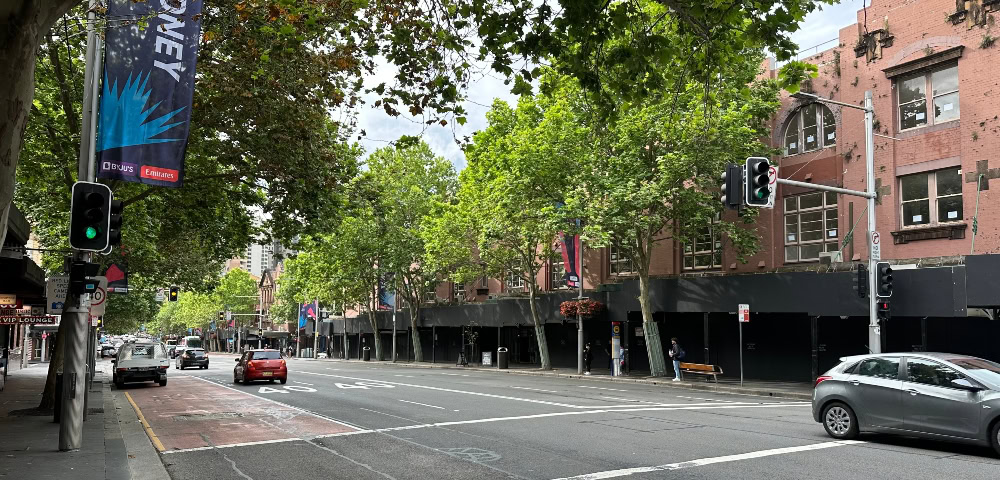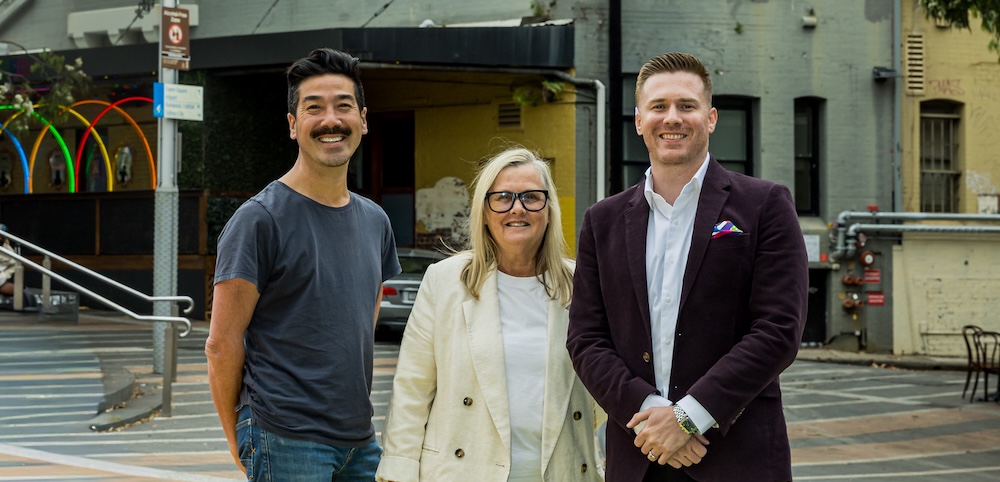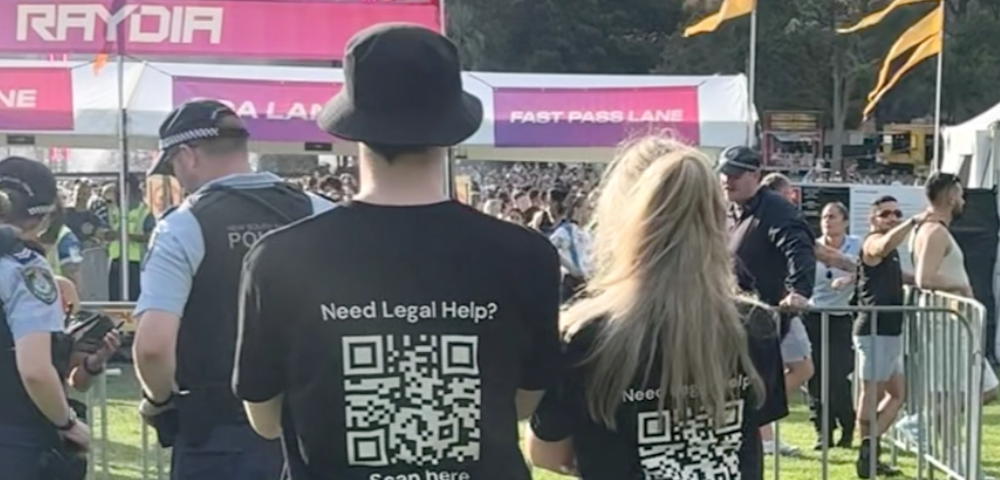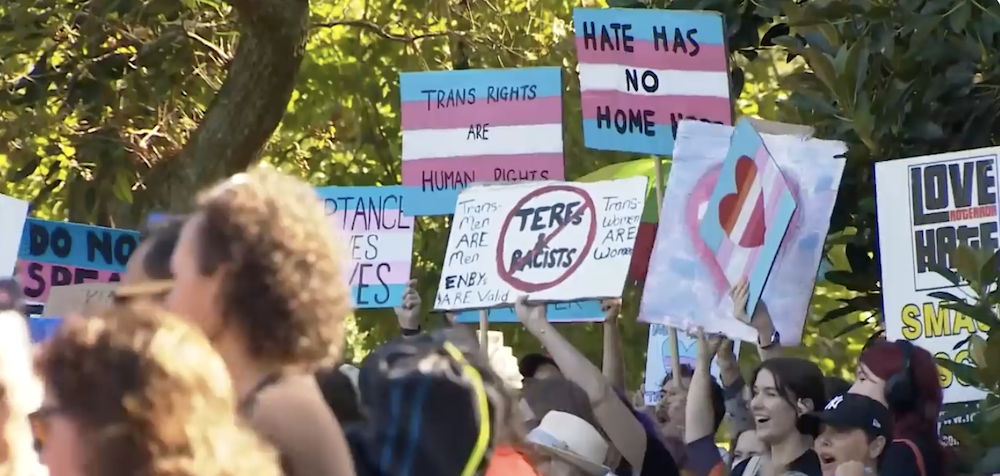
Oxford Street: A Story of Heterosexual Neglect

By Chris Pepin-Neff
In city after city, the trans, lesbian, gay, and bisexual neighbourhoods are revered as a value-building, capacity-growing establishment in the broader social infrastructure context. But not in Sydney. Here, there are concerns about police behaviour and sniffer dogs in the lead-up to WorldPride, and then there is the general disrepair of Oxford Street. From boarded-up frontages to orange cones on the sidewalk, these signs seem to be a metaphor for heterosexual investment in queer life in Sydney.
This stands in stark contrast to New South Wales Government data from as far back as 2009 that showed “the overall direct economic impact to the state of New South Wales [of Sydney Mardi Gras] was close to $29,548,761.”
However, according to Sydney Mardi Gras, a decade later, this amount has increased to $131 million, with SMG stating, “ In 2019, Sydney’s Mardi Gras festival made a $131.1 Million contribution to the NSW economy by bringing over 68,000 visitors to Sydney from interstate and around the world.”
So rather than whinge in the wind, let’s be positive and make suggestions based on the literature and evidence. There is a lot of data on how to build a rainbow mile. Castro Street in San Francisco, Old Compton Street in London, Santa Monica in West Hollywood, and Rue Saint Catherine in Montreal all provide good examples.
Here are some lessons:
Gay Spending Zones
Nan Boyd (2011) did a study on the redevelopment of the Castro and found, “The history of this transformation overlaps significantly with the production of a gay-spending zone in the same district. A behind-the-scenes organization, the Golden Gate Business Association, played an important role in this transformation.”
Community Honour Plaques
According to the San Francisco Public Works project on Castro Street, they put in place a plan to “host the Rainbow Honor Walk, with inlaid plaques of LGBT heroines and heroes as well as celebratory supplemental lighting and decorative crosswalks.”
Inclusive Progress Rainbow Crosswalks
According to the Los Angeles Blade, the addition of a progress flag crosswalk in WeHo was a significant step for the city. “The new inclusive pride crosswalks demonstrate our City’s commitment to recognizing and honoring all within our LGBTQ+ community as well as our acknowledgement that equity is needed for historically marginalized members of our LGBTQ+ community,” said Mayor Pro Tempore Sepi Shyne.
Street Lights and Disco Balls
In 2022, Saint Catherine Street in Montreal established an urban oasis for tourists and locals. According to Sofia Misenheimer with a Montreal Blog, “Sixty floating disco balls will be installed along rue Sainte-Catherine Est, between rue Saint-Hubert and avenue Papineau, turning the pedestrian walkway into a glittering dancefloor by the end of July.”
Intersectional Social Investment
A lesson for the heterosexual agenda on Oxford Street. These improvements should be made mindful of the need to be intersectionally sensitive and prioritise the lives of homeless populations, street art, sex workers, disability needs and access, and all of those operating on the margins of society who need more help. They do not need to be swept aside because the gays, corporations, and straights want the streets to look pretty for Pride and Mardi Gras.
Where There’s a Gay, There’s a Way
Oxford Street has a lot to offer, as I noted in the “Insider’s Guide to Gay Sydney” last week. And I know what the City of Sydney Council will say: “We have allocated an appropriate amount for cleaning up Oxford Street in preparation for your homosexual celebration.” In fact, the City has allocated $300,000 as a “facelift” for Oxford Street ahead of WorldPride. Is this enough, no. Is this a starting point? No, not really, either. What is needed is a race to the finish with less than 100 days to go that relies on local community engagement to get this done. Where there’s a gay, there’s a way. And Sydney (as a local community) will deliver WorldPride in spectacular fashion. But the message is clear that the heterosexual agenda needs to get on board and help us do the work.
Dr Chris Pepin-Neff (they/them) is a writer and lecturer. This piece does not reflect the opinions of his employer.










Maybe kinda nice not super gentrified with prams.
Shall we all string up disco balls from the trees, lights etc. love the idea of a disco ball flash mob